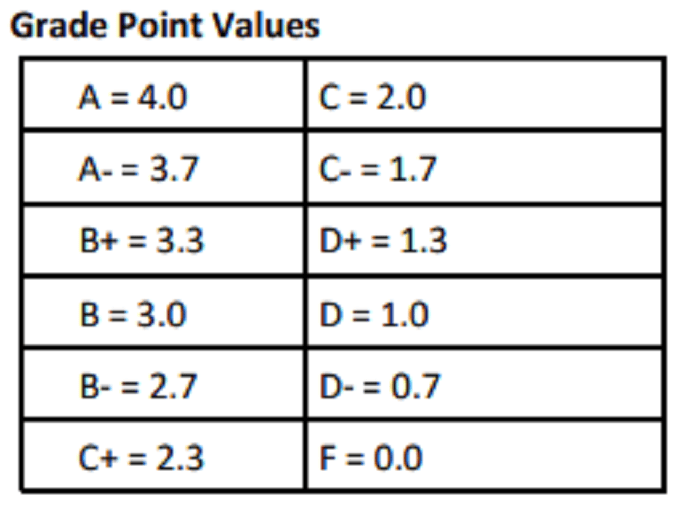If you’re a current or soon-to-be college student, you might have wondered at some point whether professors round up grades like high school teachers often do – especially when you’re right on the borderline and hoping for a bit of a boost. Will that 89.5 be enough for an A when final grades come out? What about an 89.9?
The answer of whether colleges round up grades isn’t a straightforward one, as not only do different schools have different policies, but so do different professors within each school. In general, professors tend to round up grades when it’s close, but not all of them do.
In this article, we’ll dive into the nitty-gritty of grading policies and explore whether or not your college is likely to round up your grades.

Do College Professors Round Up Grades?
Your high school teachers probably rounded up your grade if it was right on the A/B borderline. But can you expect the same from your college professors? The short answer is, it depends.
There are no uniform policies about grade rounding across all colleges and universities. Instead, each institution – and even each professor – has the autonomy to set their own grading policies, including the decision of whether to round up a student’s grade.
What’s more, even among those professors who do round up, the criteria for doing so can vary widely. For example, some might only round up if a student is a tiny fraction of a point away from the next letter grade (e.g., an 89.95 when an A starts at 90), while others might be more lenient and round up a whole half a point.
From our own experiences in college and from talking to current college students, we have found that far more professors round up grades than don’t. But don’t be surprised if you run across a holdout or two during your college career.
Some professors might argue that rounding up grades is a disservice to students who truly earned the higher grade, while others might feel that as long as it’s done uniformly and consistently, it’s a fair way to give students a little boost at the end of the term.
Regardless of your professor’s individual policy, if you find yourself on the cusp of a better grade, it never hurts to have an open and honest conversation about your performance and whether rounding up is an option – or if there are other ways, such as an extra credit paper or project, that you can pull yourself over the threshold.
What Is the Grading Scale in College?

As you can probably guess, there isn’t a one-size-fits-all grading scale in college like there might have been at your high school. Grading scales can vary widely from institution to institution and from professor to professor.
The most common grading system in college classes is the 10-point scale. In this system, a grade of 90 to 100 is an A, 80 to 89 is a B, 70 to 79 is a C, and so on.
Some professors might use a different grading scale, though. In notoriously difficult classes, such as organic chemistry, for instance, a professor might be a little more lenient and use a 12-point or even a 15-point scale.
And then you have writing-intensive classes, where numerical grades are often not given at all. Instead, professors assign letter grades to papers and other assignments and then average them out at the end of the semester or term, typically using either the standard 4-point system (4 points for an A, 3 points for a B, etc.) or the 12 point system, where an A+ earns 12 points, an A earns 11, an A- 10, and on down the line.
Do College Grades Include Pluses and Minuses?
Another common question is whether college grades include pluses and minuses. Once again, it depends, although plus and minus grades are common at most colleges and universities in the United States.
While most schools give plus and minus grades, there can be some variation in how they’re used. For example, the University of Tennessee and the University of South Carolina both use pluses, but not minuses. That means a grade of 87-89 might be a B+, but a grade of 90-92 would simply be an A rather than an A-.
On the other hand, some colleges use a full plus/minus scale. In this system, a grade of 90-92 would be an A-, a grade of 87-89 would be a B+, and so on.
That said, just because a college uses pluses and minuses doesn’t necessarily mean that every professor will use them. Some professors might choose not to include them in their grading, or they might have their own criteria for when to use them.
For example, a professor might decide to eschew minuses altogether and only give plus grades when a student is very close to the next letter grade, such as an 89.
Your syllabus in each class should spell out in detail what the grading policy is. If you still have questions, it’s never a bad idea to communicate with your professor. That way, you’ll know exactly what to expect and won’t be caught off guard by a minus grade.
How Do Pluses and Minuses Affect Your College GPA?

Plus and minus grades can impact your GPA, but how they’re calculated into your overall average can vary from school to school.
That being said, the most common system is to add or subtract a third of a point for a plus or minus grade, respectively. For example, an A- would be worth 3.67, while a B+ would be worth 3.33. So, if you got all A’s in your classes, but some of them were A-minuses, your GPA would be somewhere between 3.67 and 4.0.
But not every school uses this system. For example, the University of Tennessee—Knoxville adds an entire half of a point for a plus grade and has no minus grades. That means a B+ would be worth 3.5, instead of the 3.33 that it would be worth under the more common system. And all A grades would be worth 4.0.
The overall impact of plus and minus grades on your cumulative college GPA depends on how many of them you get and how many credits each class you get them in is worth. But in general, a few pluses or minuses here and there probably won’t make a huge difference in your overall GPA.
Not to mention, plus and minus grades tend to even out. You might be disappointed because you ended up with an A- in a particular class, but at the same time be pleasantly surprised when the B you were expecting in another class ends up being a B+.
Do Colleges Really Grade on a Curve?
You hear about “the curve” all the time with regard to grades.
So-and-so set the curve on the last test.
But does “the curve” really exist in college, or is it more a figure of speech? Once again, it depends. It varies from school to school and even from professor to professor. However, the classic bell curve where C is the most common grade and only a select few students get A’s is not as prevalent as it once was.
If you want evidence of the bell curve’s obsolescence, consider that at many elite colleges, like Harvard and Princeton, the average GPA is well above a 3.0. That means most students are making B’s or higher in their classes, not C’s.
These days, most professors who “curve” grades do so in a way that is much more advantageous to students. They tend to curve grades only upward, never down. Professors may curve grades by making the highest grade in the class the equivalent of a perfect score, even if it’s well below 100.
For example, if the highest grade in the class is a 90, the professor might add 10 points to everyone’s score, making the top grade a 100. A raw score of, say, 78, would turn into an 88, giving the student a B+ instead of a C+.
This system is particularly common in classes that are known to be difficult, like organic chemistry or upper-level calculus. Without a generous curve in these courses, many students might end up at risk of not passing at all.
Rounding Up Grades: The Bottom Line
The decision of whether to round up grades almost always rests with your professors, and their grading policies should be spelled out in your class syllabus. In most cases, you’ll find that a professor will round an 89.5 up to an A – but not all of them do.